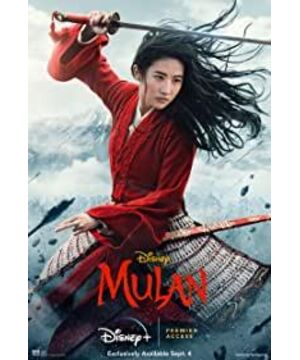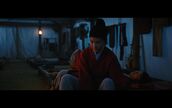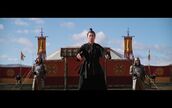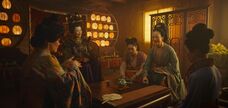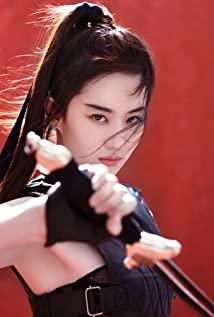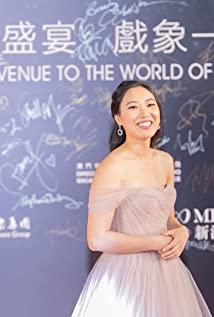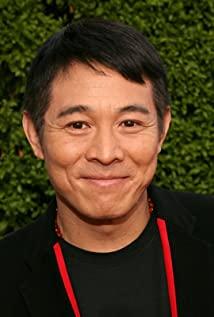0. What is the relationship between "Mulan Ci" and the movie "Mulan"?
Both Mulan Ci and Hua Mulan are two "artistic versions" that tell the story of the prototype of Mulan. As a folk song, "Mulan Ci" cannot be understood as a letter of history, but a literary creation of "the story of fighting against foreign women" in that era. The movie "Mulan" is also our era's understanding of the story of confronting and fighting foreign women. The same prototype, of course, will have different interpretations of artistic creation in different eras and different cultural backgrounds.
1. If you want to talk about Hua Mulan, the topic that cannot be avoided is what is the background of Hua Mulan.
At present, the mainstream generally believes that what happened during the Northern Dynasties, and it is probably the folk accounts of the war between the early Northern Wei Dynasty and Rouran after Emperor Xiaowen of the Northern Wei Dynasty. From the original story of "Mulan", "Mulan Ci", there are many clues. For example, "Khan is a big soldier", "The emperor sits in Mingtang", "Mulan doesn't need Shangshulang", here at the same time involves the title of the leader of the ethnic minorities and the habitual title of the Han people, as well as the official posts established after the Sinicization of the Northern Wei Dynasty. It will be sinicized earlier than Emperor Xiaowen of the Northern Wei Dynasty. But the narrative story is likely to be the war between the Northern Wei Dynasty and Rouran in the early days of the Northern Wei Dynasty. There were many large-scale wars between the Northern Wei Dynasty and Rouran between AD 424 and 429, including the Northern Wei Taiwu Emperor Tuobatao's far-reaching attack on Rouran Yu Mobei. war. Mulanci may describe this war. From the perspective of the Han people, it is possible to take for granted that Rouran’s threat to the capital of the Central Plains was against Chang’an or Luoyang, but if this was the war between the Northern Wei Dynasty and Rouran, the threat was actually the Northern Wei’s capital, Pingcheng (Datong). ). And the Yellow River in Mulan's "overstay by the Yellow River" is probably not the Yellow River in Luoyang but the Yellow River in Hetao.
2. Is Mulan just a story of ethnic minorities?
Can't say that. As one of the twenty-four histories of the Northern Wei Dynasty, the "Book of Wei" is recognized by historians as the official history of China. Therefore, the Northern Wei Dynasty is not the same as a separatist dynasty or an ordinary ethnic minority regime. The story of the Northern Wei Dynasty is certainly part of ancient Chinese history.
Furthermore, the Northern and Southern Dynasties, where the Northern Wei Dynasty was located, was a special period in ancient China. During this period, the concept of "China" has changed a lot. Kawamoto Yoshiaki's "The Collapse and Expansion of China" described in more detail the changes in the concept of Chinese civilization during this period, and Xu Zhuoyun's "Me and the Other" also covered it. And more importantly, if you think that the story of Hua Mulan was formed after the Sinicization of the Northern Wei Dynasty, then it has a special meaning. The text of "Mulan Ci" is unique in that it retains many elements of ethnic minorities, but the core contradiction is the "difficulty of loyalty and filial piety" in the typical Chinese culture. It also involves the ancient Chinese civilization's "female virtue". Requirements. The reason for this is precisely because the story of Mulanci itself is the best embodiment of the sinicization of ethnic minority regimes. Just like many folk tales, because there are different versions of enlightenment in different eras (such as Little Red Riding Hood), Mulan Ci not only embodies the customs of that era, but also plays a role in enlightenment. The people of the Xianbei nationality learn to understand the Han culture by singing folk songs such as Mulan Ci. Therefore, Hua Mulan cannot be simply understood as a story between two ethnic minorities, but a story that carries the history of ethnic minorities flowing into ancient Chinese history.
3. Is the Fujian Tulou in the movie really irrelevant?
From the end of the Eastern Han Dynasty to the Sui and Tang Dynasties, the current situation was turbulent due to the chaos of war. The northern villages used to build a large number of various docks for self-defense, especially after the Yongjia Rebellion, the docks were typical buildings in the northern rural areas during the Northern and Southern Dynasties. In terms of shape, Wubao and Fujian Tulou have similar enclosing features. People live around and deal with clan affairs in the middle. The Fujian Tulou indeed originated from Wubao. In a sense, Disney's use of Fujian Tulou is really "just right". However, the images of Wubao (burial objects or ruins) unearthed so far are all square. It is worth mentioning that since the Eastern Han Dynasty, the Wubao that has gradually appeared in the north is not only a kind of architecture, but also a form of rural grassroots organization. Through the Wubao organization, local powers have formed, a large number of hidden populations have led to a reduction in taxation, and after Emperor Xiaowen of the Northern Wei Dynasty A series of reforms began to gradually break this form, allowing the country to regain control of the grassroots.
4. What other details in the movie that seem very bizarre but may not be so bizarre?
In the movie, there is a scene of "Versailles China Branch" that was complained by a lot of people some time ago. At first glance, it seemed very anti-common sense (although I saw the two stone lions in front of the steps at first glance).
However, the atmosphere from the Northern Wei Dynasty to the Sui and Tang Dynasties was indeed very different from that of later generations. The status of aristocratic women was relatively high, and the social atmosphere was relatively open. There were fewer court paintings in the Northern Wei Dynasty. In the Tang Dynasty, there were many paintings reflecting the lives of court aristocratic women, such as "The Spring Outing of Mrs. Guo Guo" shows a female and male officer riding side by side, talking and laughing along the way, just like a man. There is even a female rider holding a child.
For another example, in "Shuanglu Tu", two aristocratic women are playing backgammon in the center of the screen, and there are also two women whispering standing next to them. There is also a very similar oil painting "chess game" in the West. Ancient China has never been more than three obediences and four virtues, and ethics. Although this Disney movie has many stereotypes of ancient China, don't we have any stereotypes of ancient Chinese history?
View more about Mulan reviews


